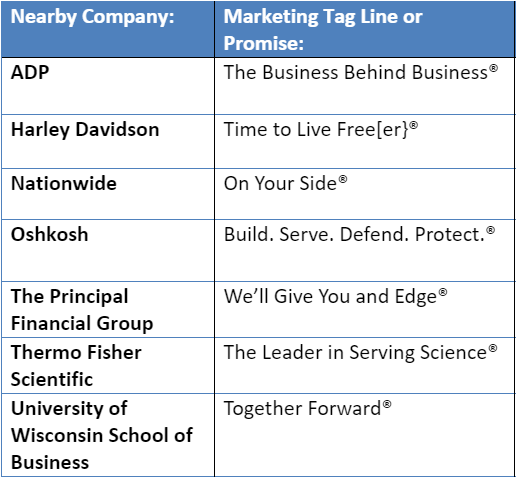
By: Dan Topf
It’s been several months since
My visit to the State Fair inspired me to write about another vital business learning topic – differentiation.
You see, each food vendor that offered new foods on-a-stick understood the basics of differentiation. It’s not just about boring corn dogs anymore. Since 2001, there’s been a boom in innovation, lead by Larry Fyfe – the inventor of the deep-fried candy bar – that has inspired the food vendors across the fairgrounds. The food vendor business has never been better.
These entrepreneurs understand that they must differentiate or die. Unless their products are different, they’re perceived to be the “same,” and as a result, their State Fair wouldn’t be a Great State Fair.
What Differentiation Means to Your Company
Differentiation is what you provide your customers, either a product or a service, that they cannot get elsewhere or do for themselves.
Jack Trout, author of Differentiate or Die: Survival in our Era of Killer Competition, estimates that there are over one billion SKU’s (standard stocking units) in America. A supermarket has about 40,000 SKU’s. However, the average family meets most of their needs with only 150 SKU’s. What’s that mean? That means that consumers have LOTS of choice, and that most options are undesirable. Customers have so many good alternatives that any mistakes or bland offerings are just ignored.
So, what’s the business value of differentiation? Some would argue that differentiation makes all the difference. Many would also say that the training and development programs we offer do not make a clear enough link to the business value your differentiation, and the skills that drive business value through differentiation.
In an earlier column, I discussed the impact of price and volume on profitability. One illustration described the impact of a 5% price increase with the same volume of sales. In short, we saw a 50% improvement in profits. Many of you said, “But if you raise prices, volume will decrease.” Yes, however if you improve the value of your differentiation, you create value in the mind of the customer, who’s willing to pay for it. The impact on the bottom line is immediate, since every additional revenue dollar is profit!
How you differentiate is unique to your industry and your chosen markets. It’s important to understand your industry’s unique business drivers and integrate them with what you know about your customers and their preferences and needs. The more you know your industry and your company’s strategy, the better positioned you will be in executing your differentiation strategy.
Consider some of these company taglines. What do you think their differentiation is? What impact should that have on your work, offerings, focus, and delivery strategies?

What Differentiates Your Company?
It may be necessary for you to interview your senior leadership, chief marketing officer, and others “in the know” about your specific industry and your differentiation. Ask questions like:
- What makes us unique in the marketplace? How are we doing that?
- When we win business, what is the most likely reason?
- What are the biggest challenges we face in keeping the promises we make in our marketing?
- What do our customers say is our strongest advantage? How do we best leverage that advantage?
- What are we doing to actively add value, innovate, and differentiate our offering so we avoid being seen as a commodity?
- Why do our donors contribute to our non-profit organization? How well do we keep that promise?
The answers to these questions will be extremely valuable as you plan for the coming year. Your alignment of offerings, content, and delivery strategies will drive differentiation and success for your company. Good luck! I’ll see you on the main concourse – I’ll be the one eating the “Twinkie Log On-A-Stick.” (Can’t get that anywhere else!)
Dan Topf, CPT is Senior Vice President for Performance Improvement at MDI, Inc., He teaches Finance and Accounting for Non-Financial Professionals at the Wisconsin School of Business Center for Professional & Executive Development. For more information contact [email protected].
To learn more
Differentiate or Die: Survival in Our Era of Killer Competition by Jack Trout
Competitive Strategy: Techniques for Analyzing Industries and Competitors by Michael E. Porter
About the Instructor: Dan Topf

Dan is a successful performance improvement consultant who is passionate about helping people and businesses achieve dramatic performance improvement through learning. His imaginative and professional presentations produce outstanding results, as documented by attendees’ performance and businesses’ improved impact.